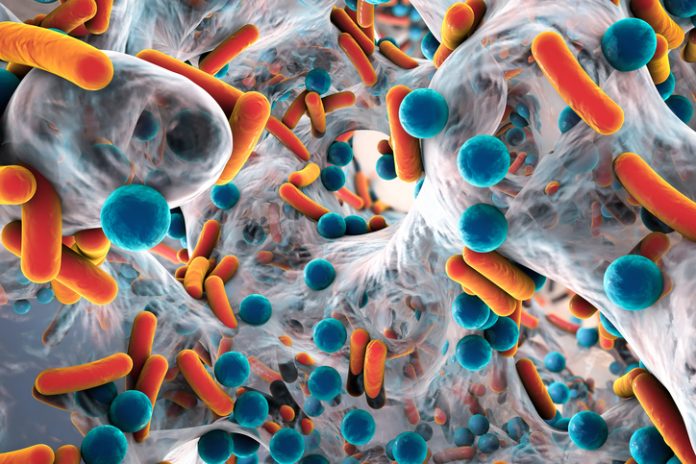
A team of researchers led by Michigan State University (MSU) in collaboration with Harvard Medical School and the National Cancer Institute has developed a promising vaccine candidate to fight antibiotic-resistant bacteria. Using a novel vaccine delivery platform, researchers in the lab of Xuefei Huang, PhD, a professor of chemistry and biomedical engineering at MSU, the preclinical vaccine exhibited high levels of immunity from lethal levels of both Staphylococcus aureus and, notably, methicillin-resistant Staphylococcus aureus (MRSA). The research is published today in Nature Communications.
Developing methods of fighting antibiotic resistant strains of bacteria is important to combat what is a growing world population health issue. According to the World Health Organization, antimicrobial-resistant infections were responsible for the deaths of more than one million people in 2019.
“There are worries that at the rate things are going, in perhaps 20 or 30 years, few of our drugs will be effective at all,” noted Huang. “This would bring us back to the pre-antibiotic age.”
While most vaccines rely on protein antigens to trigger immune response, the investigators at MSU and Harvard, focused on carbohydrate antigens comprised of saccharides, or sugars. “Sugar structures are very specific to certain bacteria,” Huang explained. “A vaccine that works against one bacterium might not work at all against another, even if they’re very similar,” said Huang, whose research has focused on the chemistry and biology of carbohydrates.
For this reason, current bacterial vaccines often contain an array of different antigens to combat a roster of different pathogens. The holy grail of bacterial vaccines would be to develop an antigen that is shared among a broad range—or perhaps all—bacteria.
The team focused on one such antigen candidate, called Polysaccharide poly-β-(1−6)-N-acetylglucosamine (PNAg), which is a carbohydrate found on the cell wall of staph, many other bacteria, and fungi. Its prevalence could offer protection against numerous pathogens at once.
Gerald Pier, PhD, of Harvard Medical School has been studying PNAG for a number of years, and this new research reveals characteristics of PNAG that could be used for a more effective bacterial vaccine.
But there are challenges to working with carbohydrates, the researchers noted. Namely, their complex structure allows for many different forms, and while one PNAG molecule may not perform well as an antigen, a slight pattern of composition could be highly effective at eliciting an immune response.
“We were very interested in this molecule and these different patterns,” Huang noted. “We wanted to know: Was there a best combination to improve Staph aureus vaccine efficiency, and does the arrangement matter?”
Through their research, the team zeroed in on biologically active molecular components known as amines and acetyl groups that reside on the backbone of PNAG. The investigators created a library of 32 different PNAG structures that differed in how and where amines and acetyl groups were attached.
From this original library of 32, antibody screening studies revealed two PNAG combinations that are promising vaccine candidates. Using a novel delivery platform that is based on the bacteriophage Qβ. While PNAG and other carbohydrates don’t typically evoke a strong immune response in humans a mutant form of Qβ, called mQβ created a much greater response.
When coupled with mQβ, the two PNAG candidates provided high levels of protection in mice against staph and MRSA and outperformed another PNAG-vaccine delivery system that is currently in human trials.
An effective vaccine against bacteria is effectively a double-edged sword, Huang noted.
“Vaccines reduce the overall infection rate, which means there’s less of a need for antibiotics,” he said. “This reduces the chance for bacteria to develop resistance, breaking the cycle. The two go hand in hand.”













